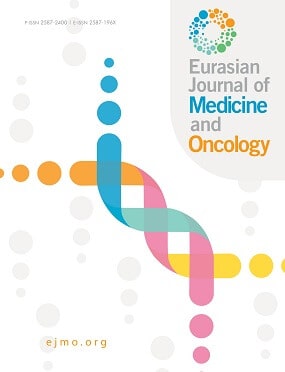

Are MRI Findings of Gallbladder Bile Associated with Gallbladder Stone Formation?
Erdem Yilmaz11Department of Radiology, Trakya University Faculty of Medicine, Edirne, Turkey,
Objectives: The aim of the present study was to evaluate the possible association between the hyperintense saturated appearance of the gallbladder bile on T1-weighted magnetic resonance imaging (MRI) in the fasting state and the development of gallbladder stone on follow-up. Methods: We evaluated 100 consecutive MRIs in the fasting state that have follow-up MRI but not gallbladder stone. On T1-weighted images, hyperintense and hypointense groups were formed according to gallbladder contents. Follow-up MRIs were evaluated in terms of gallbladder stone development. The groups with and without gallbladder stones were compared according to follow-up time. Results: Gallbladder contents on MRI in the fasting state were T1 hyperintense in 85 patients and T1 hypointense in 15 patients. There was no statistically significant difference about the development of gallbladder stone on follow-up between the T1 hyperintense group (n: 11, 12.9%) and the T1 hypointense group (n: 2, 13.3%) (p=0.96). There was no statistically significant difference about the follow-up time between the groups with and without the development of gallbladder stone (p=0.20). Conclusion: There was no significant relationship between the concentrated appearance of the gallbladder bile on T1-weighted MRI in the fasting state and the development of gallbladder stone on follow-up. We believe that this probable relationship can be evaluated more clearly with prospective studies, larger populations, and long-term follow-up.
Cite This Article
Yilmaz E. Are MRI Findings of Gallbladder Bile Associated with Gallbladder Stone Formation?. EJMO. 2018; 2(4): 217-220
Corresponding Author: Erdem Yilmaz



